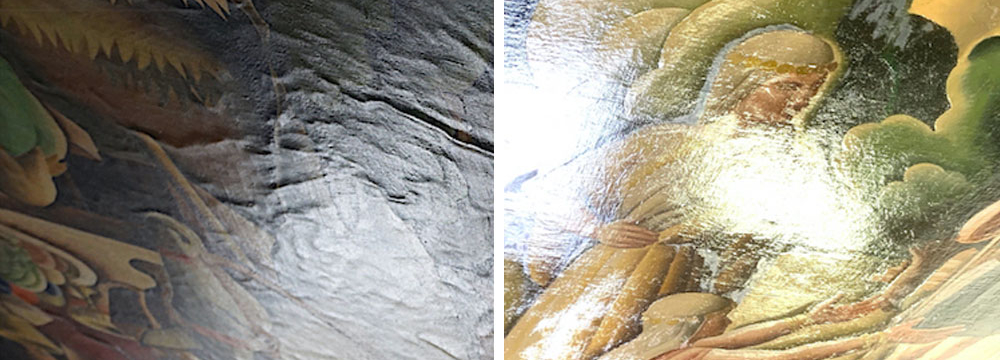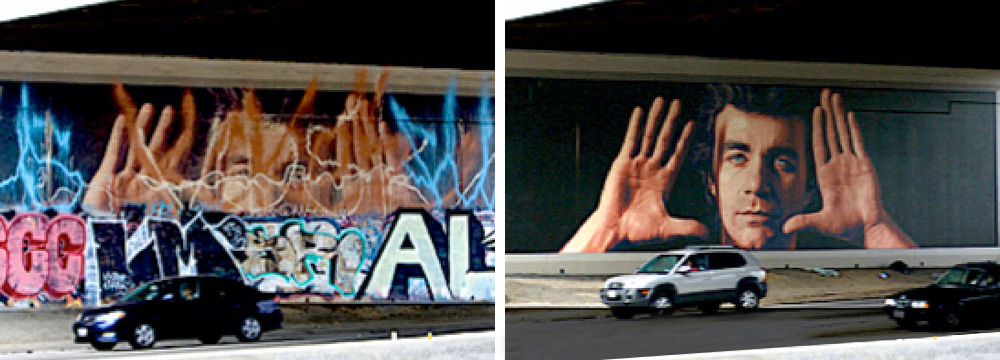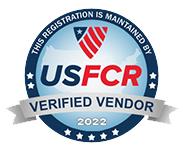PARALOID (TM) B-72
http://www.rohmhaas.com/wcm/products/product_print.page?display-m…
1. PRODUCT AND COMPANY IDENTIFICATION
PARALOID (TM) B-72 100% Resin
Supplier Rohm and Haas Company 100 Independence Mall West
Revision date:
09/26/2003
Component
Acrylic polymer(s)
Individual residual monomers Toluene
3. HAZARDS IDENTIFICATION Emergency Overview
CAS-No.
Not Hazardous Not Required 108-88-3
Concentration
99.0 – 100.0% <=0.1% <=0.8%
Material Safety Data Sheet
For non-emergency information contact:
Emergency telephone number
Spill Emergency Health Emergency Chemtrec
215-592-3000
215-592-3000 215-592-3000 800-424-9300
Philadelphia, PA 19106-2399 United States of America
2. COMPOSITION/INFORMATION ON INGREDIENTS
Appearance
Form Colour
Odour
Potential Health Effects Primary Routes of Entry:
Granular solid clear
Acrylic odor
Inhalation Eye contact Skin contact
|
Hazard Summary |
CAUTION! IRRITATION OF NOSE, THROAT, AND LUNGS HEADACHE |
1 of 6
1/18/2008 11:55 AM
Eyes:Monomer vapors from heated product can cause the following: slight irritation
Skin:Prolonged or repeated skin contact can cause the following: slight irritation
Inhalation:Inhalation of dust can cause the following:
irritation of nose, throat, and lungs
Inhalation of monomer vapor from heated product can cause the following: May cause nose, throat, and lung irritation.
headache
PARALOIDTM B-72
http://www.rohmhaas.com/wcm/products/product_print.page?display-m…
nausea Toluene
Toluene Toluene
Toluene Toluene
4. FIRST AID MEASURES
Inhalation:Move to fresh air.
ACGIH
US CA65CRT IARC
IARC IARC
Not classifiable as a human carcinogen.
Developmental toxin. Classification not possible from current data. Inadequate data.
Evidence suggests lack of carcinogenicity.
Skin contact:Wash with water and soap as a precaution. If skin irritation persists, call a physician.
Eye contact:Flush eyes with water as a precaution. If eye irritation persists, consult a specialist.
Ingestion:Drink 1 or 2 glasses of water. Consult a physician if necessary. Never give anything by mouth to an unconscious person.
5. FIRE-FIGHTING MEASURES
Flash point
Ignition temperature Lower explosion limit Upper explosion limit
Suitable extinguishing media:
not applicable
393.0 °C (739.40 °F) estimated not applicable
not applicable
Use the following extinguishing media when fighting fires involving this material:
carbon dioxide (CO2)
dry chemical
water spray
fighting:Material as sold is combustible; burns vigorously with intense heat.
Specific hazards during fire
Special protective equipment for fire-fighters:Wear self-contained breathing apparatus and protective suit.
Further information:Water mist may be used to cool closed containers. Remain upwind.
Avoid breathing smoke.
6. ACCIDENTAL RELEASE MEASURES
Personal precautions
Appropriate protective equipment must be worn when handling a spill of this material. See SECTION 8, Exposure Controls/Personal Protection, for recommendations.
If exposed to material during clean-up operations, see SECTION 4, First Aid Measures, for actions to follow.
Environmental precautions
CAUTION: Keep spills and cleaning runoff out of municipal sewers and open bodies of water.
Methods for cleaning up
Floor may be slippery; use care to avoid falling.
Eliminate all ignition sources.
Ventilate the area.
Transfer spilled material to suitable containers for recovery or disposal.
7. HANDLING AND STORAGE
Handling
Store in a cool, dry, well ventilated place. Avoid contact with eyes, skin and clothing. Wash thoroughly after handling. Keep container tightly closed. Do not breathe vapours/dust. Static charges can accumulate: use bonding and grounding between transfer equipment and receiving containers and for anyother operations capable of generating static electricity.
2 of 6
1/18/2008 11:55 AM
PARALOIDTM B-72 http://www.rohmhaas.com/wcm/products/product_print.page?display-m…
Storage
Storage conditions:Material can burn; limit indoor storage to approved areas equipped with automatic sprinklers. Ground all metal containers during storage and handling.
Storage temperature:-18.00 – 49.00 °C(-0.40 – 120.20 °F)
Further information:
Monomer vapors can be evolved when material is heated during processing operations. See SECTION 8, for types of ventilation required.
8. EXPOSURE CONTROLS / PERSONAL PROTECTION
Exposure limit(s)
Exposure limits are listed below, if they exist.
Toluene Rohm and Haas Rohm and Haas Rohm and Haas ACGIH ACGIH OSHA/Z2 OSHA/Z2 OSHA/Z2 Z1A Z1A
TWA STEL Absorbed via skin TWA SKIN_DES TWA Ceiling MAX. CONC TWA STEL
50 ppm 75 ppm
50 ppm
200 ppm 300 ppm 500 ppm
375 mg/m3 100 ppm 560 mg/m3 150 ppm
|
Component |
Regulation |
Type of listing |
Value |
Eye protection:Use safety glasses with side shields (ANSI Z87.1or approved equivalent). Eye protection worn must be compatible with respiratory protection system employed.
Hand protection:Cotton or canvas gloves.
Respiratory protection:A respiratory protection program meeting OSHA 1910.134 and ANSI Z88.2 requirements or equivalent must be followed whenever workplace conditions warrant a respirator’s use. None required under normal operating conditions. When dusty conditions are encountered, wear a properly fitted NIOSH approved (or equivalent) half-mask, air-purifying respirator. Air-purifying respirators should be equipped with NIOSH approved (or equivalent) organic vapor cartridges and N95 filters. If oil mist is present, use R95 or P95 filters.
Protective measures:Facilities storing or utilizing this material should be equipped with an eyewash facility.
Engineering measures:Use local exhaust ventilation with a minimum capture velocity of 150 ft/min. (0.75 m/sec.) at the point of dust or mist evolution. Refer to the current edition of “Industrial Ventilation: A Manual of Recommended Practice” published by the American Conference of Governmental Industrial Hygienists for information on the design, installation, use, and maintenance of exhaust systems.
9. PHYSICAL AND CHEMICAL PROPERTIES
3 of 6
1/18/2008 11:55 AM
Appearance
Form Colour Odour
pH
Boiling point/range Melting point/range Flash point
Ignition temperature Lower explosion limit Upper explosion limit Vapour pressure Relative vapour density Water solubility Density
Granular solid clear
Acrylic odor
not applicable
not applicable
no data available
not applicable
393 °C (739.40 °F) estimated not applicable
not applicable not applicable
not applicable practically insoluble 0.66 g/cm3Bulk density
PARALOIDTM B-72
http://www.rohmhaas.com/wcm/products/product_print.page?display-m…
Viscosity, dynamic Evaporation rate Percent volatility
not applicable not applicable 1 % maximum
NOTE: The physical data presented above are typical values and should not be construed as a specification. 10. STABILITY AND REACTIVITY
Hazardous reactions
Materials to avoid
Hazardous decomposition products polymerization
None known.
This material is considered stable.
However, avoid temperatures above 260C/500F. Thermal decomposition is dependent on time and temperature.
There are no known materials which are incompatible with this product. Thermal decomposition may yield acrylic monomers.,
Product will not undergo polymerization. 11. TOXICOLOGICAL INFORMATION
Acute oral toxicity Acute dermal toxicity Skin irritation
Eye irritation
LD50rat > 5,000 mg/kg
Toxicity data for a compositionally similar material. LD50rabbit > 3,000 mg/kg
Toxicity data for a compositionally similar material. rabbitslight irritation
Toxicity data for a compositionally similar material. rabbitslight irritation
Toxicity data for a compositionally similar material.
Further information
No data are available for this material. The information shown is based on profiles of compositionally similar materials. Component:Toluene
Acute inhalation toxicity LC50rat 4 h15.07 mg/l
12. ECOLOGICAL INFORMATION
There is no data available for this product. Toluene
Ecotoxicity effects
Toxicity to fish
Toxicity to fish
Toxicity to fish
Toxicity to algae
Toxicity to aquatic invertebrates
LC50Rainbow trout96 h 24 ppm
LC50Fathead minnow (Pimephales promelas)96 h 26 ppm
LC50Bluegill sunfish96 h 13 ppm
EC50Algae96 h >433 ppm
EC50Daphnia magna48 h 11.5 ppm
13. DISPOSAL CONSIDERATIONS
Environmental precautions:CAUTION: Keep spills and cleaning runoff out of municipal sewers and open bodies of water.
Disposal
Waste Classification:When a decision is made to discard this material as supplied, it does not meet RCRA’s characteristic definition of ignitability, corrosivity, or reactivity, and is not listed in 40 CFR 261.33. The toxicity characteristic (TC), however, has not been evaluated by the Toxicity Characteristic Leaching Procedure (TCLP).
For disposal, incinerate this material at a facility that complies with local, state, and federal regulations.
4 of 6
1/18/2008 11:55 AM
PARALOIDTM B-72
http://www.rohmhaas.com/wcm/products/product_print.page?display-m…
14. TRANSPORT INFORMATION
DOT IMO/IMDG
Not regulated for transport
Not regulated (Not dangerous for transport)
15. REGULATORY INFORMATION
Workplace Classification
This product is considered non-hazardous under the OSHA Hazard Communication Standard (29CFR1910.1200).
This product is a’controlled product’ under the Canadian Workplace Hazardous Materials Information System (WHMIS).
SARA TITLE III:Section 311/312 Categorizations (40CFR370):This product is not a hazardous chemical under 29CFR 1910.1200, and therefore is not covered by Title III of SARA.
SARA TITLE III:Section 313 Information (40CFR372)
This product does not contain a chemical which is listed in Section 313 at or above de minimis concentrations.
CERCLAInformation(40CFR302.4)
Releases of this material to air, land, or water are not reportable to the National Response Center under the Comprehensive Environmental Response, Compensation, and Liability Act (CERCLA) or to state and local emergency planning committees under the Superfund Amendments and Reauthorization Act (SARA) Title III Section 304.
US. Toxic Substances Control Act (TSCA) All components of this product are in compliance with the inventory listing requirements of the U.S. Toxic Substances Control Act (TSCA) Chemical Substance Inventory.
Pennsylvania
Any material listed as “Not Hazardous” in the CAS REG NO. column of SECTION 2, Composition/Information On Ingredients, of this MSDS is a trade secret under the provisions of the Pennsylvania Worker and Community Right-to-Know Act.
California (Proposition 65)
This product contains a component or components known to the state of California to cause birth defects or other reproductive harm:
Components: Toluene 108-88-3
California (Proposition 65)
This product contains trace levels of a component or components known to the state of California to cause cancer and birthdefects or other reproductive harm:
Components: Benzene
16. OTHER INFORMATION Hazard Rating
Legend
71-43-2
|
Health |
Fire |
Reactivity |
|
|
HMIS |
1 |
1 |
0 |
|
ACGIH |
American Conference of Governmental Industrial Hygienists |
|
BAc |
Butyl acetate |
|
OSHA |
Occupational Safety and Health Administration |
|
PEL |
Permissible Exposure Limit |
|
STEL |
Short Term Exposure Limit (STEL): |
|
TLV |
Threshold Limit Value |
|
TWA |
Time Weighted Average (TWA): |
|
| |
Bar denotes a revision from prior MSDS. |
5 of 6
1/18/2008 11:55 AM
PARALOIDTM B-72 http://www.rohmhaas.com/wcm/products/product_print.page?display-m…
6 of 6
1/18/2008 11:55 AM
The information provided in this Safety Data Sheet is correct to the best of our knowledge, information and belief at the date of its publication. The information given is designed only as a guidance for safe handling, use, processing, storage, transportation, disposal and release and is not to be considered a warranty or quality specification. The information relates only to the specific material designated and may not be valid for such material used in combination with any other materials or in any process, unless specified in the text.
Print Date:
Version:1.1 02/29/2004
Layout 208776










